About Human Ame (hAME) Studies
Before a drug receives marketing approval and is made available to patients, it has to be extensively studied in non- clinical and clinical studies to demonstrate its safety and efficacy. Understanding a drug’s disposition – its absorption, distribution, metabolism, and excretion (ADME) – is critical for understanding its clinical properties. The pivotal clinical study for determining the hAME characteristics of a drug is the mass balance study. The human mass balance study ascertains a drug’s elimination routes and extent, describes time course of elimination, elucidates major metabolic pathways, and identifies and quantifies metabolites and their contribution to the administrated dose. All of this information is extremely valuable for predicting or explaining, for instance, drug-drug interactions and drug toxicities of a drug at pharmacologically active doses.
Apart from the clinical pharmacological need to elucidate the hAME properties of a drug, the information gained from a human mass balance study is expected for regulatory filing and approval of small molecule drugs including many recently approved novel cancer drugs. In this context, quantification of metabolites has gained particular attention since the publications of the Metabolites in Safety Testing (MIST) guidelines.1, 2 These guidelines issued by the Food and Drug Administration (FDA) and the International Conference on Harmonization (ICH) recommend additional safety assessments for unique human metabolites and/or major metabolites that occur in humans at disproportionately higher levels than in any of the preclinical toxicology species.
WHAT IS A RADIOLABEL HUMAN AME STUDY?
In a mass balance study, a radioactive label (usually 14C) is incorporated into a drug before the drug is administered to subjects. The radioactivity facilitates the monitoring, identification, and quantification of the drug and drug-related substances in blood, plasma, urine, and feces collected from the study subjects. Moreover, the radioactivity can be used to calculate the difference between the administered dose and the dose recovered from excreta: i.e. mass balance. Although mass balance data indicates the total amount of drug-related substances (unchanged parent drug plus metabolites) recovered, mass balance data alone provide no structural nor quantitative information about the metabolites.
The primary goal of metabolite profiling and identification is to detect, characterize, and quantify circulating drug- derived components (parent and/or metabolites) to ensure adequate exposure of human metabolites in preclinical species used in toxicological evaluations. The secondary goal is to determine whether biotransformation is a major elimination pathway for the drug and to gain awareness of possible structural “alert”.
The universal approach for detection, structural elucidation, and quantitation of radiolabel-tagged drug-related metabolites is by liquid chromatography tandem mass spectrometer coupled to a radio-flow detector (LC-MS/MS-RFD). LC-MS/MS and high resolution mass spectrometry (HRMS) provide definitive structural information, while LC-RFD measures and quantitatively determine all radioactive drug-related material. Therefore, LC-MS/MS-RFD methodology can concurrently provide the structure information and the data required to calculate the AUC of quantifiable circulating metabolites and the amount of the major metabolites in the excreta.
BENEFITS
An hAME study, if well designed and executed, is a rich source of information about the disposition of a drug in humans. Knowing the route and extent of elimination of the drug will guide the dosing paradigms in patients with renal and hepatic impairment. The analyses include identifying metabolites that could contribute to the drug’s pharmacological effect and/or toxicity profile as well as providing quantitative descriptions of metabolites for individual patients. Inter-individual metabolic variation among patients may affect clinical outcome and drug safety and, thus, is important to include in the drug’s approved label.
EXECUTION
The clinical part of a mass balance study starts with the administration of a single dose of the study drug, usually containing a 14C-label, to a small group of subjects, where the amount of radioactivity administered to each subject is extrapolated based on a rat 14C-labeled quantitative whole-body autoradiography study. After drug administration, blood samples and excreta are collected from each subject over a pre-defined period. The radioactivity in the collected samples represents the sum of the drug related substances, i.e., the unchanged parent drug and all metabolites containing the radiolabel. Theoretically, the mass balance is complete when 100% of the administered radioactivity is recovered in the excreta.
The bioanalytical part of a mass balance study is the analysis of the study samples, which are collected for two separate purposes:
- Quantitative analysis of total radioactivity. This is the sum of the drug-related substances and is used to construct time lines for the routes and extent in the excretion of all drug-related substances and to determine mass balance.
- Qualitative and quantitative analysis of metabolites. Samples are usually profiled using highly selective chromatographic method(s) to separate known and unknown metabolites from the unchanged drug. Next, the unknown metabolites are characterized, while the structure of known metabolites are confirmed. Finally, all radiolabeled peaks (unchanged drug and metabolites) are radio-quantitated based on their radioactivity to calculate the area under the curve (AUC) ratio of quantifiable metabolites to parent.
QUANTITATIVE ANALYSIS OF TOTAL RADIOACTIVITY
To determine the pharmacokinetics of all drug-related substances and to calculate the mass balance, the total radioactivity in plasma, whole blood and excreta is measured. Generally, measuring the radioactivity in urine and feces is sufficient to complete the mass balance but sometimes, additional matrices, e.g., expired air, are analyzed, if needed. Inadequate collection time can often explain an incomplete recovery in the mass balance study.
Traditionally, total radioactivity is measured by liquid scintillation counting (LSC). As with other bioanalytical assays, a lower limit of quantification (LLOQ) should be determined for LSC measurements. While LSC is still widely applied, a more recent technique to determine 14C-radioactivity is accelerator mass spectrometry (AMS), which can be up to a million-fold more sensitive than LSC. Obviously, the high sensitivity of this technique is a major advantage, as a mass balance study can be accomplished by administration of a 14C-labeled drug at the nCi instead of the μCi range. To date, wide application of AMS is still hampered by the high cost of the instrument and the complexity of the method and sample preparation procedures.
METABOLITE PROFILING AND IDENTIFICATION
Metabolite profiling and identification aims to detect, characterize, and quantify the parent drug along with known and unknown metabolites. This process requires a tailored approach different from that of standard quantitative LC-MS/MS analysis:
- Metabolite profiling comprises of pooling plasma samples, usually using Hamilton pooling scheme, to encompass all possible metabolites with their concentrations to directly reflect the relative steady state concentrations or contributions to total AUC.
- Sample preparation tends to be very laborious to ensure extraction recovery and column recovery are over 90%, while sample integrity is not comprised due to stability or sample handling issues.
- Meanwhile compatibility with the detection system; thorough investigation of the liquid chromatographic methodology to separate and detect all drug-derived components and to distinguish all metabolites; and simultaneous structural elucidation of unknown metabolites are required.
- The latter is often performed by combining several techniques, such as mass spectrometry, especially HRMS, NMR, and if necessary, enzyme incubation experiments with, for example, glucuronidases and/or sulfatases to aid identification of glucuronide or sulfate metabolites.
After the metabolites are identified, individual patient samples are radio-quantitated followed by PK calculation of the unchanged drug and the individual metabolites to assess whether there are human-specific or disproportional human metabolites.
REPORTING OF RESULTS
The final step of a mass balance study is to report the results. The results from mass balance studies are normally presented as pharmacokinetic parameters, concentration-time curves, cumulative recovery curves, tables with quantitative or structural information of metabolites in different matrices, and a biotransformation scheme with the structures or descriptions of the metabolites. Because they are such a rich source of information, human mass balance studies will continue to play an important role in drug development. Ultimately, the drug and metabolite elimination data are included in the drug product label to inform the physicians and patients about the elimination profile of a drug and to help guide the dosing paradigm in hepatic and renally impaired patients.
QPS EXPERIENCE
QPS has extensive experience with hAME sudies. We understand the complexities, particularly with respect to managing and conducting your radiolabeled hAME studies. We are committed to provide you with the following services.
- Consultation and Preparation of Clinical Study Protocol; including determination of human radiation dosimetry estimates on the basis of recommendations by MIRD, ICRP and/or the Sponsor
- Ethics Committee & Competent Authority Submission
- Preparation and Release of Radiolabeled IMP According to GMP Annex 13 by a Licensed Radio- pharmacy; including homogeneity and assessment of radio-purity of the IMP in formulation by HPLC-radio flow-through detection prior to dispensing
- Drug Administration of Radiolabeled IMP by a Designated and Radio-licensed Research Physician
- Flawless Execution of hAME Study According to Protocol
- Collection, Processing, and Analysis of Radioactive Human Blood, Plasma, and Excreta (urine, feces, and expired air)
- Metabolite Profiling, Identification, & Radio- quantif ication
- Preparation and Submission of an Integrated Clinical Study Report (CSR)
BROAD ACCESS
QPS provides clients with broad access to our nonclinical and clinical radiolabel ADME and hAME capabilities. Clients also benefit from our experience in nonclinical and clinical development of a diverse portfolio of treatment modalities for a wide range of therapeutic indications. Our preferred vendor agreements also provide for the establishment of client-dedicated units within our organization.
TIMELY DELIVERY
Partnering with QPS will position your company for success, enabling timely, personalized delivery of your drug portfolio to the marketplace.
REFERENCES
1. US FDA, Department of Health and Human Services, Guidance for Industry, Safety Testing of Drug Metabolites (2008) [http://www.fda.gov/downloads Drugs/GuidanceComplianceRegulatoryInformation/Guidances/ ucm079266.pdf].
2. International Committee on Harmonization. Non-Clinical Safety Studies for the Conduct of Human Clinical Trials and Marketing Authorization for Pharmaceuticals (2009) [http://www.fda.gov/downloads/Drugs/GuidanceComplianceRegulatoryInformation/Guidances/ ucm073246.pdf].






